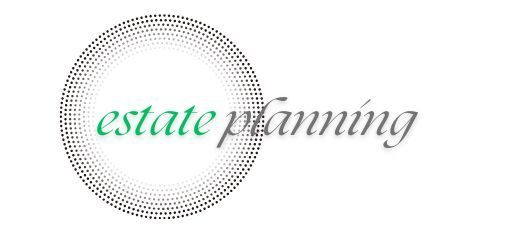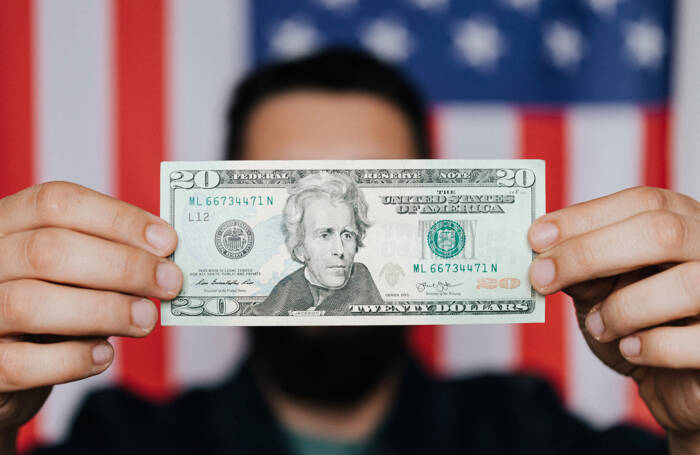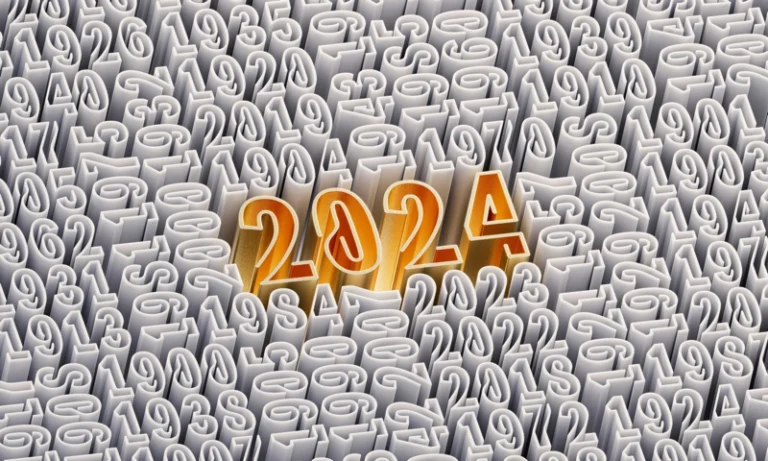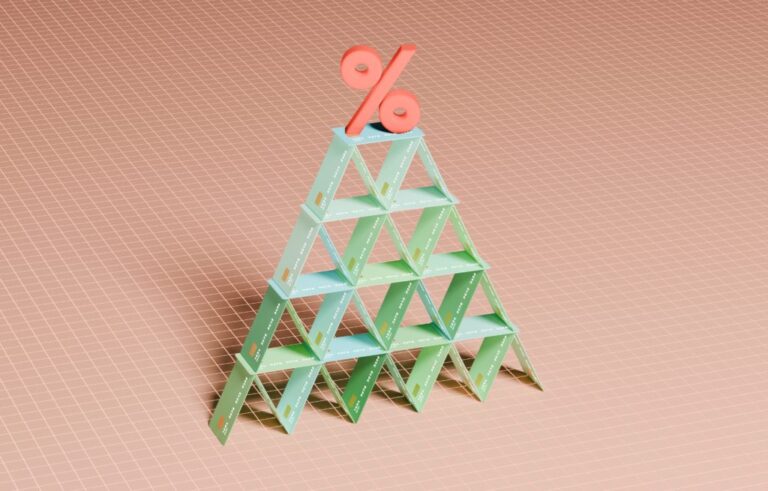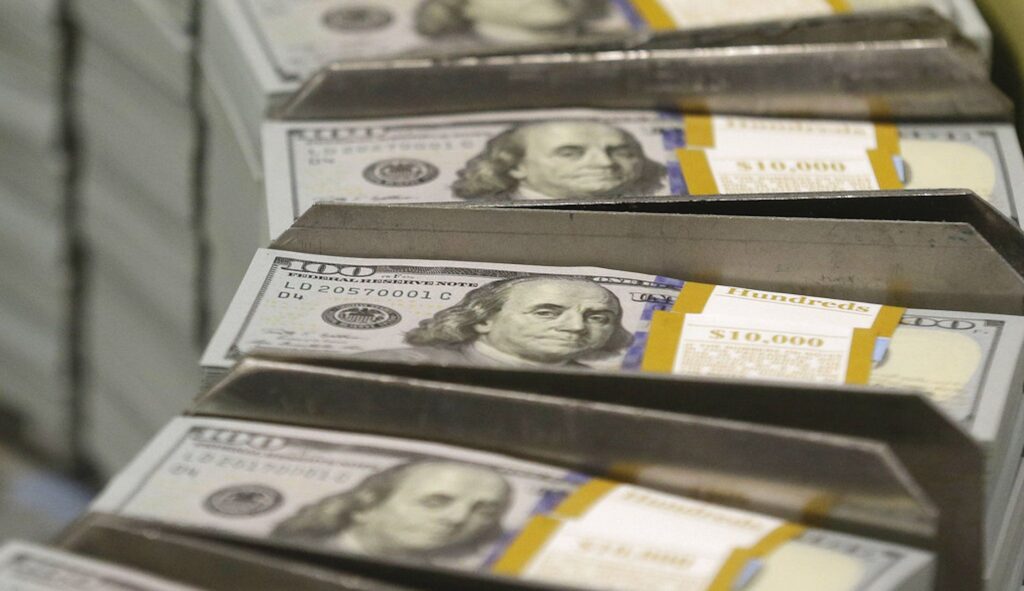
Economic headwinds to confront Trump admin in 2025: Inflation, tariffs, and beyond
- Asian shares are mixed ahead of key US inflation data
- Stocks rally after inflation data but close lower for the week
- Powell led the Fed’s fight against inflation. It’s not over yet — and it could get even harder
- WATCH: Fed Chair Powell holds news conference following quarter-point interest rate cut
- Conservative groups ask for corporate tax cut, end to capital gains inflation tax
In the spirit of the season, the Washington Examiner has identified 12 issues we believe will shape and influence 2025 – and beyond. The incoming Trump administration has made the fight against illegal immigration, and the use of tariffs, its flagship policy items. The U.S. will also potentially undergo a health revolution, while very real questions need answered on everything from social security reform to the military to the changing landscape of the energy sector. Part 5 will look at economic headwinds confronting the Trump administration.
Bạn đang xem: Economic headwinds to confront Trump admin in 2025: Inflation, tariffs, and beyond
After a year of falling but still high inflation and the looming threat of tariffs, here is what could lie ahead for 2025.
Uncertainty clouds the outlook for 2025. Projections for the jobs market, economic output, and other major economic variables are all guesses. President-elect Donald Trump will enter office on Jan. 20 and has vowed to impose major tariffs on countries across the globe, further increasing uncertainty.
Notably, as of December, it doesn’t appear as though a recession or protracted downturn is imminent, and despite some recent wobbles, inflation has generally been falling. Still, there is always a chance of unknown exogenous shocks to the economy, such as when crypto giant FTX suddenly collapsed or when Silicon Valley Bank sparked fears of a banking crisis after it failed.
Tariffs
Perhaps the biggest uncertainty that could cause headwinds for the broader economy is what will happen with U.S. tariff policy.
Trump has vowed 10% to 20% across-the-board tariffs, meaning that imports from allies and adversaries alike could become that much more costly. Many analysts fear the higher tariffs could be passed along to those in the United States, and some economists consider them a form of tax on consumers.
The left-of-center think tank Center for American Progress found that Trump’s 10% tariffs would squeeze consumers because companies would pass the costs on to them, costing them $1,500 more annually. The Peterson Institute for International Economics found that 20% tariffs would cost a typical U.S. household more than $2,600 a year.
However, it is hard to gauge exactly what the tariff situation might end up looking like. That is because Trump’s pledge to raise tariffs might be more of a threat than a concrete plan. Tad DeHaven, a policy analyst at the libertarian Cato Institute, which generally opposes tariffs, said the tariffs could be more of a threat and a way to compel countries to acquiesce.
“But you know, at the same time, that’s not good for business investment,” he told the Washington Examiner. “It creates a lot of uncertainty. And if your goal is to grow the economy, you want to be looking at lowering barriers, not increasing barriers.”
Right now, business executives and financial markets are sort of taking a wait-and-see approach when it comes to trade policy.
Xem thêm : Iran’s Currency Crisis Deepens as Inflation Soars and Poverty Rises
“Those are very difficult to nail down because we don’t know what the implementation of those threats look like,” Mark Hamrick, senior economic analyst at Bankrate, told the Washington Examiner.
Inflation
Inflation has gradually trended down from a peak of about 9% in 2022, but consumers are still feeling the pain from four cumulative years of high inflation — meaning things are now generally about 20% more expensive than when Biden entered office.
While inflation has largely been on the decline, it has shown some stickiness that may persist into the new year. The consumer price index recently posted its first uptick in inflation in six months. CPI inflation rose 2.6% for the year ending in October. The Fed’s most closely watched gauge, the personal consumption expenditures index, rose two-tenths of a percentage point to 2.3% in October.
In some good news, inflation expectations have been falling, according to the University of Michigan Consumer Sentiment Index for November.
Year-ahead inflation expectations fell a bit from 2.7% in October to 2.6% last month. Notably, that is the lowest that inflation expectations have been since December 2020, right in the midst of the pandemic and before the country began grappling with its most brutal inflation surge in decades.
However, again, the inflation question will also tie in very closely to the tariff question.
“Trump 2.0 tariffs are likely to disrupt, not upend, the U.S. economy,” Wells Fargo economists said in a recent report. “Economic expansion is still likely, albeit at a slower pace, while inflation could remain above the Fed’s target as consumers at least partly bear the cost of tariffs.”
The Fed last updated its inflation projections at its September meeting. It updates such forecasts every other meeting.
The most recent projections indicate central bank officials see inflation, as gauged by the personal consumption expenditures index, falling to 2.1% by the end of 2025. That is a healthier decline than the 2.3% predicted in June.
However, notably, the Fed has not updated projections since Trump won the election.
“Big question marks are out there with respect to the future direction of food and energy prices, an array of consumer goods, given the policy uncertainty associated with the tariffs pledge and threats,” Hamrick said.
Housing
Xem thêm : Inflation driving theft of cheese and butter worth thousands: police
The housing market is causing major trouble for many families. It has been shackled by high mortgage rates and high prices, a combination that has pushed affordability out of reach for many.
Housing affordability was a major matter on the campaign trail, given that voters have already been struggling to afford goods such as groceries because of inflation. Troubles with housing affordability have only added to consumers’ economic woes.
In recent weeks, the average rate on a 30-year, fixed-rate mortgage has been close to 7%, according to Mortgage News Daily, which tracks daily changes in rates. Mortgage rates recently peaked at over 7.4% in April and have remained prohibitively high even as the Fed begins to trim short-term interest rates.
Jeffrey Roach, chief economist for LPL Financial, told the Washington Examiner that he is anticipating mortgage rates will begin to fall in the new year, much to the relief of consumers. Still, he said the U.S. is facing headwinds from a supply shortage that is not expected to go away in 2025.
“I think by the time you hit 2025, mid-2025, mortgage rates will come down — that will ease up some of the burden on buyers,” he said.
Bill Adams, chief economist for Comerica Bank, also predicted a better year for those who are looking to buy a home but might be priced out right now. That is, in large part, an expectation that mortgage rates will continue to moderate.
“As mortgage rates fall, the housing market should benefit as more buyers and sellers alike test the water,” Adams said. “Many Americans have delayed decisions to upsize, downsize, or relocate during the last few years’ housing market lockup, and that delayed activity is going to start flowing in 2025 as mortgage rates become less high.”
Unknowns
There are major unknowns for the economy heading into 2025. For instance, geopolitical risks could send shockwaves through the economy — as they did during the Russian invasion of Ukraine, which drove up oil prices and exacerbated inflation across the globe.
It also should be noted that economists can be incorrect in their projections. In late 2022, some economic models were predicting there would be a recession last year, and some even said it was a near certainty. Instead, gross domestic product growth increased by more than expected.
CLICK HERE TO READ MORE FROM THE WASHINGTON EXAMINER
Even with years of high interest rates, economic output has been chugging right along. The economy grew at a 2.8% annual rate in the third quarter of this year, just under the strong 3% rate the quarter before.
“What we do know is that the U.S. economy has proven much more robust and resilient over the past several years than might have been expected,” Hamrick said.
Nguồn: https://estateplanning.baby
Danh mục: News
